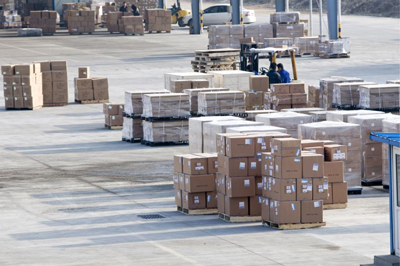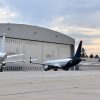 Recently the Indian MRO association has addressed the government demanding to place the spare parts import for the aftermarket sector under the 'deemed exports' category, enabling service providers to benefit from a tax holiday, thus easing up the intensive logistics of aftermarket spare parts. Despite the constant complaints voiced by airlines and MROs worldwide, import taxation on spare parts is still an issue in most countries across the world. Moreover, the tax burden comes on top of the already pricey service. According to IBM, airlines spend an average of $218 per flight hour on spare parts. In the meantime, the delays caused by technical faults and poorly managed logistics of spare parts add up to $22 million per year in the U.S. alone. With that in mind, there’s no wonder that the urgency to improve spare parts logistics is on top of the airlines and MRO’s priority list.
Recently the Indian MRO association has addressed the government demanding to place the spare parts import for the aftermarket sector under the 'deemed exports' category, enabling service providers to benefit from a tax holiday, thus easing up the intensive logistics of aftermarket spare parts. Despite the constant complaints voiced by airlines and MROs worldwide, import taxation on spare parts is still an issue in most countries across the world. Moreover, the tax burden comes on top of the already pricey service. According to IBM, airlines spend an average of $218 per flight hour on spare parts. In the meantime, the delays caused by technical faults and poorly managed logistics of spare parts add up to $22 million per year in the U.S. alone. With that in mind, there’s no wonder that the urgency to improve spare parts logistics is on top of the airlines and MRO’s priority list.
Naturally, carriers have been always eager to reduce AOG-related downtimes to a minimum. After all, every hour that an aircraft spends on the ground costs thousands of dollars. Although the aviation spare parts market is forecasted to grow by 4% in the following three years’ time (acc. to Research and Markets report), the percentage of flight delays caused by technical failures is still rising. For instance, since 2013 the number of AOGs, including those prolonged by the wait for a spare, has increased by a solid 2%. Seeking to avoid mountainous losses, some players choose to maintain huge stocks of spares and components ‘just in case’. However, industry experts are highly sceptical about such a strategy and their scepticism is well-grounded. In fact, even if a carrier is geared up with spare parts for ad hoc situations, there’s still the need to deal with such issues as the vast distances between part storages and airports, not to mention cumbersome customs procedures.
“Every now and then we observe the situation when solving an AOG is taking longer than expected due to logistics-related hassle or bureaucratic delays in customs clearance.  For instance, last year a journey of 200 passengers on board of the Norwegian Air’s Boeing 787-7 Dreamliner travelling from Orlando to Oslo was disturbed by a more than 40 hour-long delay, as the aircraft was waiting for a spare part to arrive from Norway. This only comes to show that logistics still remains a very pressing issue when it comes to the successful management of any airline’s aftermarket supply chain,” says Zilvinas Sadauskas, the CEO of Locatory.com.
For instance, last year a journey of 200 passengers on board of the Norwegian Air’s Boeing 787-7 Dreamliner travelling from Orlando to Oslo was disturbed by a more than 40 hour-long delay, as the aircraft was waiting for a spare part to arrive from Norway. This only comes to show that logistics still remains a very pressing issue when it comes to the successful management of any airline’s aftermarket supply chain,” says Zilvinas Sadauskas, the CEO of Locatory.com.
Spare parts supply chain is a huge part of any airline’s business strategy. According to Oliver Wyman consultancy, each year companies spend more than 5 billion dollars on the insurance policies against component failures alone. And while the developed markets are somewhat capable of coping with the management of spares, the emerging regions such as India are still struggling with underdeveloped aftermarket logistics and heavy taxation. For instance, newly imported replacement parts in India are subject to 35% tax, meaning that airlines have to pay up to $3 million for importing A320 and Boeing 737 replacement engines alone. Other emerging markets suffer from similar or even higher customs duties, so there’s no wonder that local carriers and MROs are struggling to make ends meet.
“Without any doubt, coming up with flexible policies that would facilitate spare parts delivery is crucial to the industry. Meanwhile, one of the ways to avoid unexpected delays is to ensure that every part that one might need can be found in every country an airline operates in. After all, since the aviation industry is deeply scattered, the chances of discovering a spare part when you are in a remote region without proper communication are slim to none. In this case, the ability to access different offers from reliable suppliers with the help of innovative IT solutions can be a matter of saving thousands of dollars. Moreover, web solutions are irreplaceable when it comes to developing and maintaining tighter connections with other industry players, not to mention the benefit of a more transparent aftermarket process,” concludes the CEO of Locatory.com Zilvinas Sadauskas.





